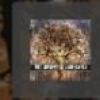Recently, it has become very fashionable to talk about mentality - a set of ethnocultural, social skills and spiritual attitudes, stereotypes. However, they began to talk about ethnic characteristics that distinguish one culture from another much earlier. Each nation has its own time.
When an individual ethnos begins to realize itself as a special people, different from other peoples, when it begins to oppose its nation to others, a person must appear who indicates by what parameters "we are not like everyone else" and explains "why we are not like that" ...
The national identity of the Slavs intensified in the second half of the 18th - 19th - 20th centuries. It was at this time that a wave of national liberation movement passed among the Czechs, Slovaks, Poles, and then among the Bulgarians, Serbs, Croats, Slovenes ... The former separated themselves from the Germans, Austrians and Hungarians, the latter from the Turks, Hungarians, Austrians, Greeks ... The dominant peoples (and nations) of the empires at this time are no longer able to perform a unifying function, and their pressure on other peoples of the state is now perceived as something negative, which must be got rid of.
But it is one thing to separate oneself from others, and another to unite with one's own kind. This is necessary so that those from whom they separated would understand: this nation is a strong people, it deserves independence, it is necessary to reckon with it.
But it turns out that in order to unite with their own kind, you also need grounds. And what, no matter how culture, brings nations together? What then, no matter how common beliefs, common features in housekeeping, common rituals, common traditions?
The ideas of uniting the Slavs are constantly in the air. They are either expansive-conquering, then liberating, then educational, then friendly in nature. Back in the second half of the 17th century, Croat Yuri Krizhanich came up with the idea of creating an all-Slavic language. In the 18th century, here and there voices were heard about the commonality of the Slavs, their historical traditions and cultures. In the 30-60s of the XIX century, nationalist circles and communities appeared among different Slavic peoples, which, on the one hand, have a political orientation, and on the other, cultural and educational. Scientists bit by bit collect and classify ancient manuscripts, ancient monuments, objects of Slavic life, folklore, make up all kinds of ethnographic descriptions, study and compare Slavic languages. Public figures in every possible way promote the national identity of the Slavs, defend the rights of the Slavic peoples living within the most powerful empires of the 19th century (Austro-Hungarian, Ottoman, Russian), talk about the need to remember their roots, cultivate the ideas of communality. Moreover, the line between a scientist and a politician is often very conditional.
The activities of nationalist circles and communities result in strong socio-political and cultural movements. In Russia, this is the movement of Slavophilism (I.V. Kireevsky, K.S.Aksakov, A.S. Khomyakov, K. Leontiev, N. Danilevsky), among the Czechs - Pan-Slavism (J. Kollar, L. Shtur, P.Y. Shafarik, K. Kramarzh), among the southern Slavs, in particular, in Croatia, Slavonia, - Illirism (L. Gai, I. Kukulevich-Saktsinsky, P. Preradovich, V. Babukich).
Their ideas are embodied in journalism, in fiction, in the visual arts, where the authors seek to reflect the national characteristics of both individual Slavic peoples and the Slavs in general. Universities set up Slavic departments, whose members are actively involved in the collection and analysis of ethnographic, linguistic and cultural materials. A solid scientific foundation has now been laid under Slavic studies, based not on weak feelings of unity, but backed up by specific cultural, linguistic and historical facts.
Bibliography
For the preparation of this work were used materials from the site slawianie.narod.ru
Introduction
Slavic culture is an information and analytical resource on the culture and history of Slavism and Ariism, created with integration into modern society, affecting the main trends in the cultural development of society on the basis of historical heritage, taking into account all stages of the formation of culture and history, from the earliest - the Hyperborean period to ours days.
The main task of our resource is to touch upon as long as possible a period of time and the most diverse areas of history and culture within the framework of the formation of heritage, so that users of the resource can fully appreciate our culture and history.
Slavic culture
It is gratifying to note the indisputable fact that today there is a steady growth of interest in the study of ancient Russian history and culture, rethinking our own place in world history in the light of enriched historical experience, the formation of our own national idea at a new level.
The information and analytical resource "Slavic Culture", created by the efforts of enthusiasts and sponsors, is dedicated to this topic.
The ascent to the origins of Proto-Slavic culture is a fairly new process in our public consciousness, and therefore, naturally, it encounters a number of difficulties. These include several main factors:
- the resistance of the official historical science, which from the Soviet (and earlier - from the Romanov) times asserted that Russian history begins, allegedly, only from the first millennium of our era;
- confessional pressure on “paganism”, weighty arguments of “fire and sword” combined with rejection and misunderstanding of the deep ideological system of the Holy Russian Vedas;
- a social (if not to say - criminal) order of Western centers of influence for the purposeful belittling, falsification, and sometimes direct destruction of our history.
Despite numerous difficulties, a brilliant galaxy of interesting authors, talented and selfless researchers of the ancient, pre-recorded times of Slavic-Russian culture has formed in Russia today. The works of Chudinov, Asov, Guseva, Bogdanov, Kalashnikov, Robaten, Mansurov, Gnatyuk, Belov, and many others reveal an understanding of the spiritual world of our ancestors, created on the basis of a single religious attitude.
The most important source studies have been made, the content of the Vedic sacred books and legends has become available to us. "The Book of Veles", "The Star Book of Kolyada", "Months" and many other ancient texts give us the richest, invaluable material that expands the horizons of our understanding of ourselves. We will learn about the era of the birth of Slavic families, about the ancient migrations of the Proto-Slavs-Aryans, about wars, about the history of the first Slavic kingdoms, about their worldview and way of life.
Of course, these vast layers of Proto-Slavic history are still at the stage of research and require an answer to many still not sufficiently studied questions. There is a scatter of opinions of different authors and discrepancies. This is a normal process of becoming a true, not custom-made historical science. When analyzing and comparing various research works and points of view, the most general contours of our protohistory, which are still blurred by temporal remoteness, are indicated:
- the historical presence of the ancestors of the Slavs, the ancient Aryans, became most noticeable during the periods of their mass migrations; the first such migration can be traced after the beginning of the first Great Glaciation, about 60 thousand years ago; then the Aryans moved from the north of Eurasia in a southern direction, where they met resistance from the representatives of the red race - the descendants of the Atlanteans, as well as representatives of the black, Negroid race;
- after the end of the period of the first Great Glaciation, about 40 thousand years ago, there is a partial reverse outflow of the Aryans in the northern direction; the rest of the Aryans make their genetic contribution to the formation of European peoples;
- before the onset of the second Great Glaciation, the Aryans create the legendary country of the Hyperboreans located on the coast and islands of the Arctic Ocean;
- the beginning of the second Great Glaciation, about 25 thousand years ago, gives an impetus to the second mass migration of the Aryans to the south; most of the planet, from the Atlantic to the Pacific Ocean, is drawn into the sphere of influence of the Aryan Vedic civilization, geographically concentrated in the Valdai Upland, from where peoples originating from the Aryans - Etruscans, Huns, Scythians, Sarmatians, Slavs - are generated and emerge into the historical arena; - it is important to reiterate that these are just outlines that require further research and clarification.
In this regard, we note that it is precisely among its priority practical tasks that "Slavic culture" includes the collection, systematization and analysis of all available information about the Proto-Slavic history.
From the point of view of the Internet, the Slavic Culture project is unique in that it is both a portal and a social network. The information resource of the portal will allow the most discerning reader to delve deeply into history, find a huge number of books, articles, photo, image, audio, video materials on the topics: Slavic culture, Slavism, Russia, Russia.
Here, in social network"Slavic culture" you can communicate with others on a topic of interest. Registered users will find here a considerable list of services and opportunities: Photo galleries, forums, blogs, personal pages, clubs and much more.
The formation of the history of Slavic culture is dramatic, it took place and is happening in the conditions of a fierce ideological struggle. As has been repeatedly noted by various authors, in the last three centuries alone, thousands of works have been devoted to this topic, various, sometimes warring historical schools have emerged.
Still, we can say that we are all very lucky. We can congratulate ourselves on the fact that we are witnesses and direct participants in the living historical process of the formation of ancient Slavic history, the difficult search for our spiritual origins, after a long period of their oblivion and finding anew, at a new round of historical development.
It's time for Slavic ancient history to take its rightful place in modern education Russia, in the minds of every Russian, for the path to the future lies through the knowledge of the past. So be with "Slavic Culture"!
Slavs. Who are they?
Slavs (Old Slavic Slovѣnє, Belorussian Slavs, Ukrainian Slovenians, Bulgarian Slavs, Serbian and Macedonian Slovenia, Croatian and Bosnian Slaveni, Slovenian Slovani, Polish Słowianie, Czech Slované, Slovak Slovania, Kashubian Słowiónie, v.-puddle Słowjenjo, n.-puddle Słowjany) is the largest ethno-linguistic community in Europe.
Currently, the Slavs are settled in the vast territory of Southern and Eastern Europe and further east - up to the Far East of Russia. There is also a Slavic minority in the states of Western Europe, America, Transcaucasia and Central Asia. The total number of Slavs is 300-350 million people, of which about half are Russians (137 million). There are Western Slavs (Poles, Czechs, Slovaks, Kashubians and Lusicans), Southern Slavs (Bulgarians, Serbs, Croats, Bosnians, Macedonians, Slovenes, Montenegrins) and Eastern Slavs (Belarusians, Russians, Ukrainians, Rusyns).
The name "Slavs"
There are several versions of the origin of the ethnonym "Slavs".
The main ones are four: from the word (people who speak "our way", in contrast to the Germans - "dumb", that is, "do not know our language", "strangers"); from the Indo-European root * kleu- 'rumor, fame' (cf. glory); from the toponym, apparently, the name of the river (compare the epithet of the Dnieper Slavutich, the rivers Sluya, Slava, Slavnitsa in different Slavic lands); from the root * s-lau-os 'people' (with Indo-European "mobile s"), cf. Greek λᾱός. There is a hypothesis that raises the ethnonym Slavs to the word man: cьlovak> clovak> slovak.
This ethnonym as a tribal one was entrenched in the course of the ethnogenesis of the Slovaks (with a slightly different suffix), Slovenes, and Slovins. The ethnonym "Slovene" as the main one, apart from these peoples, was also worn by the Ilmen Slovenes - the inhabitants of the Novgorod land.
Slavic languages
Slavic languages are a branch of the Indo-European family of languages. Slavic languages belong to the Indo-European languages of the Satem group. The Baltic and Slavic languages have much more similarities, in terms of both vocabulary and morphology and syntax, than any other group of Indo-European languages. A number of similarities between the Baltic and Slavic languages allow us to assume the existence of a state of Balto-Slavic linguistic unity in antiquity.
Many reflexes bring Illyrian closer to the Baltic and Slavic languages.
Ancestral home
According to historical linguistics, written sources and archeology, the Slavs of the 6th-7th centuries. lived on the territory of Central and Eastern Europe, stretching from the Elbe and Oder rivers in the west, across the Vistula basin, to the upper reaches of the Dniester and the middle reaches of the Dnieper in the east.
From the north, the neighbors of the Slavs were the Germans and the Balts. The eastern neighbors of the Slavs were the Iranian tribes (Scythians, Sarmatians), the southern ones were the ancient Macedonians, Thracians and Illyrians, and the western ones were the Celts.
The earliest mentions that allow solving the problem of Slavic ethnogenesis date back to the times of the Baltic Wends (Pliny the Elder, Tacitus). More detailed information of the 5th - 6th centuries, in particular, in the works of the Byzantine diplomat and historian Priscus, the Byzantine writer Procopius of Caesarea.
One of the first about the Slavs, as an independent ethnos that separated from the Wends, wrote the Gothic historian Jordan in the first half of the 6th century:
In this Scythia, the first from the west are the people of the Gepids, who are surrounded by great and most glorious rivers. Indeed, Tisia (modern Tisza) spreads across the north and its area, from the south (it) the great Danuvius (Danube) cuts off, from the east - Flutavsiy (Olt or Prut), which, being swift and abounding in whirlpools, raging, rolls into the waters of Istra. In their (rivers) environment lies Dacia, fortified (located) like a crown by the steep Alps.
On their left side, which slopes to the north, from the source of the Vistula River, a large tribe of Venets lives in vast areas. Although now their names change depending on the different genera and habitat, mostly they are still called Slavs and Antes.
The Slavs live from the city of Novietun (traditionally identified with Noviodun, present-day Isakcha, on the right bank of the Danube) and the lake, which is called Mursiansky, up to Danastr and in the north to Viskla; swamps and forests replace them with cities.
The Antas, the most powerful of them, where the Pontic Sea makes an arc, stretch from Danastra to Danapre. These rivers are separated from each other by many crossings ... After the beating of the Heruli (a Germanic tribe defeated in 512 by the Gepids and Lombards), Hermanarik also moved an army against the Veneti, who, although despicable because of their weapons, but mighty in number, first tried to resist ... But the multitude of those unfit for war does not mean anything, especially when, with the permission of the Lord, a large armed army is advancing. They, as we said at the beginning of our presentation or in the catalog of peoples, originating from one root, gave birth to three peoples, that is, Veneti, Antes and Slavs, who, although now raging everywhere, due to our sins, then, however, all submitted to the authorities Hermanarika.
Historical settlement of the Slavs
- By the 6th century they settled in the Baltic and Black Seas, where they became known to ancient historians as the Antes and Wends.
- In the 7th century, the Slavic unity was split by the Avars invading from Central Asia.
- In 622, the first Slavic state Samo was founded in Moravia, with an unidentified capital at Wogastisburg.
- The campaign of Emperor Justinian II with the Slavs conquered by him against the Arabs belongs to 692; retreat of the Byzantines due to the betrayal of the Slavs.
- By the 8th century, the Slavs settled in the Balkans and reached the shores of Lake Ladoga. Initially they were pagans, but later, approximately simultaneously with the formation of statehood, they adopted Christianity. After 1054, due to the split of the Christian Church into Catholicism and Orthodoxy, as well as under the influence of various political factors, three main confessional groups of Slavs were formed according to religious principles: Catholics (Poles, Czechs, Slovaks, Slovenes, Croats) - Christianity in the West (“Latin ") Form, Orthodox (Russians, Ukrainians, Belarusians, Serbs, Bulgarians, Macedonians) - Christianity in the Eastern (" Byzantine ") form, Muslims (part of the South Slavs: Bosnians and Muslim Macedonians) - after the Turkish conquest of the Balkans in the XIV century.
Genetic origin
Modern Slavic peoples have a very heterogeneous genetic origin, emphasizing the complexity of ethnogenetic processes in Eastern Europe, which began tens of thousands of years ago, intensified during the Great Migration of Nations in the 5th century and continues to this day. The gene pool of the Slavs, like a number of other peoples, has been forming for tens of millennia, while ethnocultural traditions could pass from ancestors to descendants through hundreds of generations.
One of the versions says that the separation of the Slavic branch of the Indo-Europeans, the formation of the Proto-Slavic ethnos and language occurs around 3000 BC, when the Indo-European nomads (Culture of battle axes, in the male line, carriers of mainly haplogroups R1a in the northern part of the area and R1b in the south) assimilate the developed agrarian Trypillian culture (along the male line, predominantly the Paleo-European haplogroup I2a2 with a small proportion of the Middle Eastern E-V13, J2b and T). Probably, it was as a result of this hybridization that the Culture of spherical amphorae arose and existed for several centuries, which, in this case, should have been recognized as the first Proto-Slavic culture. It is also suggested that the linguistic influence of the Trypillian substrate was decisive for the formation of specific features of the Slavic languages, for example, the alternation of "u / v" and "u / y" and the open syllable law, which separated the Slavic languages from the closely related Baltic languages.
In the northern part of the Slavic area, a significant part of the gene pool is made up of haplogroup N, which is characteristic of the Finnish (Ural) peoples. Probably, in the central regions of the Russian Plain, a slow mixing of Indo-Europeans and Uralians took place over the past 5 millennia (see Fatyanovskaya culture, Volosovskaya culture).
Some aspects of the Slavic gene pool, taking into account haplogroups, can be designated since the Paleolithic times as follows:
The Y-chromosomal haplogroup R1a is found among the Slavs with different frequencies. Haplogroup R1a may be associated with the settlement of the Proto-Indo-European peoples in the 5th-3rd millennia BC. NS.
I2a (formerly I1b)
Among the population of countries in which the Croatian language predominates, haplogroup I2a dominates (63.8% of Herzegovinians, 52.2% of Bosnians, 32.2% of Croats living on the mainland (among the population of islands on the Dalmatian coast, the frequency of I2a reaches 80%). , this haplogroup is associated with the tribes that spent the Ice Age off the Adriatic coast and, much later, with the Illyro-Thracian tribes of the Balkan Peninsula.
Haplogroup R1b is the most common among Czechs (35.6%). This haplogroup probably comes from tribes that spent the Ice Age in Spain. This haplogroup now dominates in Western Europe (about 90% of the Basques and Irish, 70% of the British, about 50% of the Germans). Its distribution roughly coincides with the spread of the Celtic languages in ancient times, and its frequency in Bohemia and Slovakia may be associated, among others, with the Celtic tribe of Boyi, who later gave the name of Bohemia. Among Russians, haplogroup R1b occurs with a frequency of 7%.
Ethnogenetic data are constantly being improved, refined, and therefore require constant adjustments.
Slavic population
Before talking about the Slavs as a special ethnic association, it is necessary to clarify the meaning of some ethnolinguistic terms.
The term people is usually understood as 1) linguistically the same as ethnos; 2) in the socio-political and historical plan - the population of the country, the totality of classes, nations, nationalities that have a common historical destiny; 3) in everyday life - a large group of people.
However, the word people as a term is not very convenient, since it has several meanings. The term ethnos seems to be more convenient in this regard.
Ethnicity (from the Greek ethnos "tribe, people") is a stable population of people historically formed in a certain territory, which has common features and stable features of culture (including language), mental makeup, as well as the consciousness of its unity and difference from other similar formations. The characteristics of each ethnic group and the factors of education are different. The formation of an ethnos takes place on the basis of the unity of the territory and economic activity. The signs that distinguish an ethnos and separate it from other ethnic groups are language, folk art, customs, rituals, traditions, norms of behavior, habits, that is, such components of culture that are passed down from generation to generation and ultimately form a specific ethnic culture. Each ethnic group is characterized by ethnic identity.
The Slavs (in ancient times, Slovenia) are the largest group of language-related ethnic groups in eastern and southwestern Europe, united by a common origin. Depending on the linguistic and cultural affinity, the Slavs are divided into three large groups: eastern, western and southern.
The total number of Slavic peoples according to 2002 data is over 300 million people, of which: Russians - 145.2 million, Ukrainians - about 50 million, Belarusians - up to 10 million; Poles - about 45 million, Czechs - about 10 million, Slovaks - 5.5 million, Lusatians - 0.1 million; Bulgarians - 9-10 million, Serbs - up to 10 million, Croats - 5.5 million, Slovenes - up to 2.5 million, Montenegrins - 0.6 million, Macedonians - 2 million, Muslims (self-name - boshњatsi (boshnyaki), other names - Bosnians, Bosans, Muslims) - about 2 million
In addition to these ethnic groups, there is an ethnic group that is still emerging. These are the so-called Rusyns. By origin, these are Slovaks who moved to the territory of Yugoslavia (since February 2003 - Serbia and Montenegro). This micro-ethnic group is very small in number - about 20 thousand people. Now the process of formation of the literary language Rusyn is underway.
The Slavs occupy a vast territory of Eastern Europe, as well as northern and central parts of Asia. It is immediately striking that the Slavic states are not gathered in one handful, but scattered, scattered. In the second half of the XIX century. independent Slavic states did not exist. Slavic peoples were part of three empires: Russian, Austro-Hungarian and Ottoman. The only exceptions were Montenegrins, who lived in a small independent state of Montenegro, and Lusatians, who were located in Germany. By the end of the XX century. all the Slavic peoples, except for the Russians and the Lusatians, already had state independence.
Now the largest in area Slavic state is Russia (Moscow). Russia is located in the north-east of Europe, and also occupies the northern and central parts of Asia. In the west, Russia is bordered by the Eastern Slavic states - Ukraine (Kiev) and Belarus (Minsk). Further in the north of Eastern Europe are Poland (Warsaw) and the Czech Republic (Prague). These West Slavic states in the west border on Germany, on a part of the territory of which (between Berlin and Dresden, along the banks of the Elbe and Spree rivers) Lusatian Serbs live (Cottbus, Bautzen). Another West Slavic state - Slovakia (Bratislava) - is located between Ukraine, Hungary, Austria, Czech Republic and Poland. The South Slavs partially occupy the Balkan Peninsula and the adjacent territories. They do not border on either the Eastern or Western Slavs. South Slavs live in Bulgaria (Sofia), as well as in Macedonia (Skopje), Bosnia and Herzegovina (Sarajevo), Croatia (Zagreb), Slovenia (Ljubljana), Serbia and Montenegro (Belgrade; Podgorica).
Culture of the Slavs
Recently, it has become very fashionable to talk about mentality - a set of ethnocultural, social skills and spiritual attitudes, stereotypes. However, they began to talk about ethnic characteristics that distinguish one culture from another much earlier. Each nation has its own time.
When an individual ethnos begins to realize itself as a special people, different from other peoples, when it begins to oppose its nation to others, a person must appear who indicates by what parameters "we are not like everyone else" and explains "why we are not like that" ...
The national identity of the Slavs intensified in the second half of the 18th - 19th - 20th centuries. It was at this time that a wave of national liberation movement passed among the Czechs, Slovaks, Poles, and then among the Bulgarians, Serbs, Croats, Slovenes ... The former separated themselves from the Germans, Austrians and Hungarians, the latter from the Turks, Hungarians, Austrians, Greeks ... The dominant peoples (and nations) of the empires at this time are no longer able to perform a unifying function, and their pressure on other peoples of the state is now perceived as something negative, which must be got rid of.
But it is one thing to separate oneself from others, and another to unite with one's own kind. This is necessary so that those from whom they separated would understand: this nation is a strong people, it deserves independence, it is necessary to reckon with it.
But it turns out that in order to unite with their own kind, you also need grounds. And what, no matter how culture, brings nations together? What then, no matter how common beliefs, common features in housekeeping, common rituals, common traditions?
The ideas of uniting the Slavs are constantly in the air. They are either expansive-conquering, then liberating, then educational, then friendly in nature. Back in the second half of the 17th century, Croat Yuri Krizhanich came up with the idea of creating an all-Slavic language. In the 18th century, here and there voices were heard about the commonality of the Slavs, their historical traditions and cultures. In the 30-60s of the XIX century, nationalist circles and communities appeared among different Slavic peoples, which, on the one hand, have a political orientation, and on the other, cultural and educational. Scientists bit by bit collect and classify ancient manuscripts, ancient monuments, objects of Slavic life, folklore, make up all kinds of ethnographic descriptions, study and compare Slavic languages. Public figures in every possible way promote the national identity of the Slavs, defend the rights of the Slavic peoples living within the most powerful empires of the 19th century (Austro-Hungarian, Ottoman, Russian), talk about the need to remember their roots, cultivate the ideas of communality. Moreover, the line between a scientist and a politician is often very conditional.
The activities of nationalist circles and communities result in strong socio-political and cultural movements. In Russia, this is the movement of Slavophilism (I.V. Kireevsky, K.S.Aksakov, A.S. Khomyakov, K. Leontiev, N. Danilevsky), among the Czechs - Pan-Slavism (J. Kollar, L. Shtur, P.Y. Shafarik, K. Kramarzh), among the southern Slavs, in particular, in Croatia, Slavonia, - Illirism (L. Gai, I. Kukulevich-Saktsinsky, P. Preradovich, V. Babukich).
Their ideas are embodied in journalism, in fiction, in the visual arts, where the authors seek to reflect the national characteristics of both individual Slavic peoples and the Slavs in general. Universities set up Slavic departments, whose members are actively involved in the collection and analysis of ethnographic, linguistic and cultural materials. A solid scientific foundation has now been laid under Slavic studies, based not on weak feelings of unity, but backed up by specific cultural, linguistic and historical facts.
The ancient Slavs were people of Vedic culture, therefore it would be more correct to call the ancient Slavic religion not paganism, but Vedism. The word "Veda" is consonant with the modern Russian "know", "know". This is a peaceful religion of a highly cultured agricultural people, akin to other religions of the Vedic root - Ancient India and Iran, Ancient Greece.
The main cultural monuments of Slavic antiquity are sacred songs, myths, legends, although most scientists believe that the texts of ancient Slavic sacred songs and myths perished after the Christianization of Rus. In Russian historical science, even the little that remains - Veles's book, presumably written by Novgorod priests no later than the 9th century, is considered a fake.
The history of the book, dedicated to the god of wealth and wisdom of the ancient Slavs Veles, or Volos, is mysterious and tragic. In 1919, during the civil war, she was found by an officer of the White Army F.A. Isenbek near the station Velikiy Burluk, near Kharkov, in the estate of the princes Kurakin. In 1924, in Brussels, the book fell into the hands of the writer Mirolyubov. For fifteen years he rewrote and deciphered ancient records, copying about 75% of the text. In 1943, in Brussels occupied by the Germans, after the death of Isenbeck, his entire archive disappeared, including the original Veles book. Only Mirolyubov's notes and a photograph of one tablet remained. Until now, there are disputes about the essence of the Slavic gods mentioned in the annals. And nevertheless, the opinion was expressed that the oldest layer of Slavic myths has been preserved better than Greek, Indian or biblical ones. The reason for this is the special path of development of Slavic culture. The mythical legends of other peoples were distorted during recording and processing already in ancient times. Slavic folklore is a living oral tradition that has undergone changes to a lesser extent under the influence of written culture.
The treasures of Slavic folklore - folk songs, fairy tales, epics, spiritual verses - began to be intensively collected and recorded only in the first half of the 19th century.
Velesov's book is a complex and capacious monument. To forge it is just as difficult as it is impossible to re-create the Rig Veda, Avesta or the Bible. Veles's book resolves a long-standing dispute about the origin of the Slavs and describes the fate of various tribes who participated in Slavic ethnogenesis. The most ancient event presented in it is the exodus of Indo-European tribes from Semirechye, an area near Lake Balkhash, and today bears the same name because of the seven rivers flowing into it. According to archaeologists, the migration of Indo-European tribes from Central Asia took place in the last third of the 2nd millennium BC. in the vast territory from the Balkans to the Yenisei and Northern China. Velesov's book describes the events of the mythical and ancient history Slavs of the end of the 2nd millennium BC - Koscha I millennium AD
According to the Veles book, the ancient Slavs have an archaic Trinity - Triglav: Svarog is a heavenly god, Perun is a thunderer, Belee (Volos) is a god - the destroyer of the Universe, although various priestly schools of the Slavs understood the mystery of the Trinity differently.
The veneration of female ancestors is associated with the widespread prevalence of maternal cults. In the era of patriarchy, maternal cults are transformed into female hypostases of the gods and acquire a certain a single function- become patrons of the house, hearth, fire, territory, country, person, family, love in the form of housewives, grandmothers, mothers. However, in general, female cults, in whatever modification they are encountered, always gravitate towards one of their two manifestations: they personify the world of love, either heavenly (Slavic Lele) or earthly (Slavic Mother of Cheese Earth).
The level of spiritual maturity of the ancient Slavs, their philosophical views can be reconstructed according to their cosmogonic myths. The term "cosmogony" comes from the Greek words "space" - the world, the universe; "Genesis" - birth. The name of Svarog is associated with the ancient cosmogonic myth of the Slavs about the creation of the Earth by our Progenitor - the Rod - the Spring of the Universe.
Having created the Mother Earth, Svarog established three underground kingdoms in it.
“And so that the Earth would not go into the sea again, Rod gave birth to a powerful Yusha under her - a wondrous, powerful snake. It was hard for him to keep his mother Earth for years and centuries.
So the Mother of Cheese Earth was born. So she calmed down on the snake. If Yusha the serpent moves, the Mother of Cheese Earth will turn. "
In the ancient Slavic cosmogonic myths, as well as in the myths of other ancient peoples, legends about the origin of gods (theogony) and people (anthropogony) are always intertwined, whose world is secondary to the generating forces of the cosmos, but closely interacts with them.
The son of Svarog - Perun - the second face of the Slavic Trinity-Triglava, the god of war and thunder, revived the manifest, followed the world order, rotating the solar golden ring. After the Christianization of Rus, the cult of Perun was replaced by the cult of Ilya the Prophet, and in folklore tradition - by the cult of Ilya Muromets and Yegor the Brave. The third hypostasis - Belee (later Sventovit) - was originally the god of light among the Western Slavs.
Veles's book speaks about the great secret of the trinity of Svarog - Perun - Sventovit, whose power permeated all levels of life, multiplied the worlds of gods and people with the power of love. Thus, the sacred knowledge of the ancient Slavs possessed some features of monotheism, but at the same time it had much in common with the primitive forms of religion: totemism, fetishism, animism and magic.
The Vedic worldview of the Slavs reveals the features of the ancient dialectical natural-philosophical doctrine. Chernobog and Belobog are two Slavic antagonistic deities who personified in their struggle the forces of the light of Reveal and the darkness of Navi. Reality - "white light" - is the current, that which is created by the universal just law of Truth and which, in turn, creates human life by the power of love. Everything before her, after her and the departure from her is Nav, a dark, passive, uncreative force that preserves and hides what has been achieved, a symbol of “the other world”.
According to the Veles book, the legendary brothers Kyi, Schek and Khoriv - the grandchildren of Perun - can be rightfully considered not only the founders of Kiev, which they appear to be according to later written sources, but also the mythical progenitors of the Russian people who taught him blacksmithing skills. Kiy is an ancient Russian "hammer". The ancient Slavs, like many other peoples!, Considered blacksmiths to be their ancestors. The worldview of the ancient Slavs was characterized by anthropotheocosmism, i.e. the indivisibility of the spheres of the human, divine and natural, the understanding of the world as not created by anyone, the world as an eternally living fire, regularly extinguishing and regularly lighting up.
The continuous struggle and the alternate victory of the light and dark forces of nature are most clearly captured in the ideas of the Slavs about the cycle of the seasons. His starting point was the onset of a new year - the birth of a new sun at the end of December. This celebration received the Greco-Roman name from the Slavs - "kolyada".
Archaic folk holidays like New Year's fortune-telling, riotous carnival, "Russian week" were accompanied by spellbound magical rites and were a kind of prayers to the gods for general well-being, harvest, deliverance from thunderstorms and hail.
So, there was a custom on Ilyin's day to slaughter a bull fed by the whole village in honor of the mighty Perun. For New Year's fortune-telling about the harvest, special vessels were used - enchantments. They often depicted 12 different drawings, forming a vicious circle - a symbol of 12 months.
During the excavations, vessels were found and identified that were used for sowing-harvesting ceremonies, spring-summer rituals held in sacred groves near springs and associated with the virgin goddess, the patroness of fertility.
Similarly to the problem of combining openness and closedness of the Russian economic system existing in the modern economic space, in the course of cultural studies the problem of “openness” or “closedness” of Russian culture and its “imperial character” is considered, which allows an economist to reveal the mentality of Russian culture. Elucidation of this problematization through the search for cultural synthesis in theosophical concepts of the 19th - 20th centuries. provides an explanation of the peculiarities of economic thinking prevailing in Russia.
By the time of the adoption of Christianity, the Slavic religion did not manage to develop strict forms of worship and the priests had not yet separated into a special class. Representatives of tribal unions made sacrifices to the ancestral and heavenly gods, and the “free practicing” magi took care of contacts with the lower demons of the Earth, ridding people of their harmful influence and receiving various services from them. The place of sacrifice - the temple - did not turn into a temple even when they began to put images of gods - idols on it.
During the accession of Vladimir Red Sun (? - 1015) to Kiev, a kind of pagan reform was carried out. In an effort to raise popular beliefs to the level of a state religion, next to his towers on the hill, the prince ordered to place wooden idols of six gods: Perun with a silver head and golden mustache, Khors, Dazhdbog, Stribog, Semargl and Mokoshi. According to ancient legends, Vladimir even established human sacrifices to these gods, which should have given their cult a tragic, but at the same time, very solemn character. The cult of the main god of the retinue nobility - Perun - was introduced in Novgorod by Dobrynya (Vladimir's tutor). Eight unquenchable bonfires burned around the idol of Perun, and the memory of this eternal fire was preserved among the local population until the 17th century.
By the end of the pagan period, in connection with the development of the retinue army, the funeral rites of the Slavs became more complicated. With the noble Rus, their weapons, armor, horses were burned.
Not a single culture of a spiritually developed people can exist without writing. Until now, it was believed that the Slavs before the missionary activities of Cyril (c. 827-869) and Methodius (c. 815-885) did not know the written language. According to some modern linguists and historians, Cyril and Methodius were not the creators, but only reformers of the already existing alphabet, based on the Greek alphabet and used to write the Veles book. In addition, the opinion is expressed that, in addition to the Greek, the Slavs also had their own original writing system, the so-called nodular writing. Her signs were not written down, but transmitted by means of knots tied with threads, which were wrapped in books-balls. The memory of the ancient nodular writing remained in the language and folklore. We are still tying "knots for memory", talking about the "thread of the story", "the intricacies of the plot."
The period of written priestly culture may have begun among the Slavs long before the adoption of Christianity. The tale of Baba Yaga's ball dates back to the days of matriarchy. According to the famous scientist-folklorist V.Ya. Proppa (1895-1970), Baba Yaga is a typical pagan priestess, keeper of the "library of balls" in birch bark boxes. (Isn't that where the expression "lie from three boxes" comes from?)
In ancient times, the nodular writing was widespread enough; the Kipu and Wampum were used by the ancient Incas and Iroquois. The letter "tsze-shen" was known in ancient China. The Finns, Ugrians, Karelians, who from ancient times lived together with the Slavs in the northern territories of Russia, had a nodular writing, a mention of which was preserved in the Karelian-Finnish epic "Kalevala". On many objects raised from the burials of pagan times, asymmetrical images of complex configurations are visible, reminiscent of the hieroglyphic writing of the eastern peoples.
Often in the writings of the Christian era, illustrations are found with images of complex weaves, probably redrawn from objects of the archaic era. The artists who depicted the patterns followed the rule that existed at that time - to use pagan symbols along with Christian symbols. Traces of nodular writing can be found on the walls of churches of the era of "dual faith", when Christian sanctuaries were decorated not only with the faces of saints, but also with ornamental patterns.
If the nodular-pagan writing existed among the ancient Slavs, then it was very complex. Available only to select priests and the highest nobility, it was a sacred letter. With the spread of Christianity and the extinction of the ancient culture of the Slavs, this knowledge, tied with a knotted letter, perished along with the priests-wise men. Obviously, the nodular writing system could not compete with the simpler and more logically perfect writing system based on the Cyrillic alphabet.
Orthodoxy began to supplant the ancient culture and faith of the Slavs not earlier than the 11th century. - much later than among other European peoples. Before that, it had existed for at least one and a half thousand years. It is customary to build it to the culture of the Scythians-Skolots - a highly developed agricultural people who lived in the Dnieper region in the 6th-4th centuries. BC. The culture of the Proto-Slavs-Skolots fell into decay during the Sarmatian invasion in the 3rd century. BC. Its further development - progressive over a number of centuries - was interrupted by the invasion of the Huns during the Great Migration of Peoples of the 4th-7th centuries. AD Nevertheless, from the legendary Slavic-Ant prince Bus (he is mentioned in the "Lay of Igor's Host" and the Gothic historian Jordan) and up to Vladimir, Slavic culture developed for almost half a millennium.
The legacy of such a powerful layer of the Slavic cultural archaic declared, continues to declare itself, with all the evidence, gradually: in the way of thinking, style and phraseology of speech, facial expressions.
The Skolot Scythians should not be confused with their southern neighbors - the Iranian-speaking nomadic Scythians of the Crimea and the North Caucasus.4
Distinguishing the formation of economic thinking in Russia is impossible without considering the main stages in the development of Russian culture, which led to the emergence of such a characteristic feature of the development of Russian culture, which has also found its embodiment in the economic sphere, as discreteness. It should also be emphasized that the stages of development of Russian culture indicate the dynamics of priorities and cultural values in a social context.
The culture of the Slavs was formed on the basis of three natural factors, which included forest, river and steppe. Many peoples claimed the role of masters of the Great Russian Steppe, but only the ancient Rus managed not only to gain a foothold, but eventually create one of the most powerful ancient states that ever existed. On its basis, a special type of Slavic culture arose - Eurasian, about the essence, features and purpose of which experts continue to discuss until now.
According to most historians, the ancestral home of the Slavs in the heyday of the Bronze Age (mid-2nd millennium BC) was Central and Eastern Europe. The history of the Eastern Slavs and the Russian ethnos as an independent branch of the Slavs begins in the 1st millennium BC. BC, when the Slavic tribes of the Middle Dnieper region are fighting for their independence, they build the first fortresses, for the first time facing the hostile steppe cavalry of the Cimmerians and with honor leaving the battles. By this time, scientists attribute the creation of one of the primary forms of Slavic culture - the heroic epic.
By the time the Scythians arrived in the southern Russian steppes (VII century BC), the Slavs had traveled a long historical path, which was reflected both in archaeological materials and in the detailed mythology of the Slavs. The social system of the Middle Dnieper Slavs was on the verge of statehood even one and a half thousand years before the formation of Kievan Rus. This is evidenced by Herodotus' mentions of the Slavic "kings", the equestrian features of buried warriors, the huge "royal" burial mounds in the Kiev region and the imported luxury of the Slavic nobility.
At the end of the 5th - the middle of the 6th century, the great migration of the Slavs began to the south, beyond the Danube, to the Balkan Peninsula, when the Slavic squads conquered and settled almost half of the Byzantine Empire. The movement of the Slavs, grandiose in scale, reshaped the entire ethnic and political map of early medieval Europe. The territory mastered by the Slavs was the so-called "gates of the peoples" - an open space between the Ural Mountains and the Caspian Sea, through which waves of nomadic peoples poured into the southern Russian steppes in a continuous stream. Period from the VIII to the end of the XVII century. - the most restless in the history of our country. At this time, the Russian lands were subjected to devastating raids.
The "Gate of the Nations", the southern Russian steppe, attracted many. In the 1st millennium BC. NS. the most ancient Bosporan and Scythian states arose here. In the VII-VI centuries. BC NS. the shores of the Mediterranean, Black and Azov Seas were colonized by the ancient Greeks. In the II century BC. NS. the southern Russian steppes were occupied by the Iranian tribes of the Sarmatians, then the Alans. In the III-II centuries BC. NS. these territories were invaded by the Germanic tribes of the Goths, who formed a large kingdom from the Danube to the Don. In 375 A.D. NS. Goths pushed aside the Mongol hordes of the Huns, occupying the space between the Volga and the Danube with their nomads.
The Huns were replaced in the 6th century by the new Mongolian tribe of Avars, whose domination was also short-lived. It was replaced in the 7th-8th centuries by new Asian hordes - the Ugrians (Hungarians), Bulgarians and Khazars. After a short delay, the Ugrians went to the Danube Valley, where they founded their national state. The Khazars formed in the VIII-IX centuries. vast state (kaganate).
Thus, many peoples claimed the role of the masters of the Great Russian Steppe, but only the ancient Rus, who repulsed numerous raids of superior enemies in strength, managed not only to gain a foothold, but eventually create one of the most powerful ancient states that ever existed. On its basis, a new, special civilizational type began to actively form - the Eurasian one, about the essence, cultural characteristics and purpose of which experts continue to discuss until now.
We know very little about the culture of the Slavs of that period. The surviving monuments characterize the way of life of our ancestors as follows. Before the formation of the state, the life of the Slavs was organized according to the laws of patriarchal-clan life. All matters in the community were governed by a council of elders. A typical form of Slavic settlements were small villages - one, two, three courtyards. Several villages were united in unions ("vervi"). The religious beliefs of the ancient Slavs were, on the one hand, the worship of natural phenomena, on the other, the cult of ancestors. They had neither temples, nor a special class of priests, although there were magicians, sorcerers who were revered as servants of the gods and interpreters of their will.
The main Slavic gods were as follows: Dazhd-god (among other tribes - Hora) was the god of the sun; Perun - the god of thunder and lightning; Stribog was the god of the wind; Velez was the patron saint of cattle breeding; the sky was sometimes called Svarog (and therefore Dazhd-god was "Svarozhich", that is, the son of the sky); mother earth was also revered as a kind of deity. Nature seemed to be animated or inhabited by many small spirits: wood goblin lived in the forests, water ones lived in rivers. The souls of the dead were presented in the form of mermaids dangerous for a careless person.
Places of pagan cult in Russia were sanctuaries (temples), where prayers and sacrifices took place. The sanctuaries were rounded or complex in outline, earthen and wooden structures on high places or embankments, surrounded by ramparts or ditches. In the center of the temple there were stone or wooden Slavic idols, around which sacrificial fires were burned. Fruits, animals and birds were sacrificed to the gods; human sacrifices were also known.
Belief in the afterlife, at the time when the Slavic funeral rite was being performed, forced, together with the deceased, to put in the grave everything that could be useful to him, including sacrificial food. At the funeral of people belonging to the social elite, their concubines were burned.
The Slavs had an original writing system - the so-called nodular writing. Her signs were not written down, but transmitted by means of knots tied with threads, which were wrapped in books - balls. In ancient times, nodular writing was widespread among many peoples. The ancient Incas and Iroquois, the ancient Chinese used the knotted script. It existed among the Finns, Ugrians and Karelians. On many objects raised from the burials of pagan times, asymmetrical images of complex configurations are visible, reminiscent of the hieroglyphic writing of the eastern peoples.
Three factors played a decisive role in the life of the Slavs - forest, river and steppe. The forest was used for construction and served as fuel, provided the Slavs with material for the economy, creating a home environment, dishes, weaving bast shoes. The main branches of the national economy - ancient crafts - were concentrated in the forest: our ancestors smoked tar, drove tar, were engaged in hunting and forest beekeeping. The forest served as the most reliable refuge from enemies; it replaced mountains and castles for the Russian people.
The state of the Slavs itself was strengthened not in the steppes, where it was constantly destroyed by the steppe inhabitants, but in the far North, under the cover of dense forests. The folklore, religion and morality of the Russian people are imbued with forest motives. Leshy, water, baba-yagi, just like saints and hermits, lived in the forests: “In the difficult times of the Tatar yoke, in the era of political oppression from the outside and moral decline within society, pious people who tried to escape from worldly temptations, vanity and sins, left to the forest "desert", they built cells and hermitages for themselves there and lived for many years in solitude and silence; later they were joined by other zealots of "wilderness" and organized monasteries, which later became centers and strongholds of Russian colonization.
The historical significance of the Russian rivers was not limited to their role as transport routes, although Russian colonization proceeded along the rivers and trade with other countries was carried out. But along the banks of the rivers cities, villages, small villages, fishing and hunting huts were built, the rivers fed the Slavs with their reserves, the Russian people sang them in songs. Volga - mother has become a symbol of Russia.
The third element of Russian nature - the steppe, wide, spacious and stately - for many centuries was for the Russian people not only a symbol of freedom (fugitive peasants took refuge in it), but also an eternal threat, a source of invasion and ruin.
Recently, it has become very fashionable to talk about mentality - a set of ethnocultural, social skills and spiritual attitudes, stereotypes. However, they began to talk about ethnic characteristics that distinguish one culture from another much earlier. Each nation has its own time.
When an individual ethnos begins to realize itself as a special people, different from other peoples, when it begins to oppose its nation to others, a person must appear who indicates by what parameters "we are not like everyone else" and explains "why we are not like that" ...
The national identity of the Slavs intensified in the second half of the 18th - 19th - 20th centuries. It was at this time that a wave of national liberation movement passed among the Czechs, Slovaks, Poles, and then among the Bulgarians, Serbs, Croats, Slovenes ... The former separated themselves from the Germans, Austrians and Hungarians, the latter from the Turks, Hungarians, Austrians, Greeks ... The dominant peoples (and nations) of the empires at this time are no longer able to perform a unifying function, and their pressure on other peoples of the state is now perceived as something negative, which must be got rid of.
But it is one thing to separate oneself from others, and another to unite with one's own kind. This is necessary so that those from whom they separated would understand: this nation is a strong people, it deserves independence, it is necessary to reckon with it.
But it turns out that in order to unite with their own kind, you also need grounds. And what, no matter how culture, brings nations together? What then, no matter how common beliefs, common features in housekeeping, common rituals, common traditions?
The ideas of uniting the Slavs are constantly in the air. They are either expansive-conquering, then liberating, then educational, then friendly in nature. Back in the second half of the 17th century, Croat Yuri Krizhanich came up with the idea of creating an all-Slavic language. In the 18th century, here and there voices were heard about the commonality of the Slavs, their historical traditions and cultures. In the 30-60s of the XIX century, nationalist circles and communities appeared among different Slavic peoples, which, on the one hand, have a political orientation, and on the other, cultural and educational. Scientists bit by bit collect and classify ancient manuscripts, ancient monuments, objects of Slavic life, folklore, make up all kinds of ethnographic descriptions, study and compare Slavic languages. Public figures in every possible way promote the national identity of the Slavs, defend the rights of the Slavic peoples living within the most powerful empires of the 19th century (Austro-Hungarian, Ottoman, Russian), talk about the need to remember their roots, cultivate the ideas of communality. Moreover, the line between a scientist and a politician is often very conditional.
The activities of nationalist circles and communities result in strong socio-political and cultural movements. In Russia, this is the movement of Slavophilism (I.V. Kireevsky, K.S.Aksakov, A.S. Khomyakov, K. Leontiev, N. Danilevsky), among the Czechs - Pan-Slavism (J. Kollar, L. Shtur, P.Y. Shafarik, K. Kramarzh), among the southern Slavs, in particular, in Croatia, Slavonia, - Illirism (L. Gai, I. Kukulevich-Saktsinsky, P. Preradovich, V. Babukich).
Their ideas are embodied in journalism, in fiction, in the visual arts, where the authors seek to reflect the national characteristics of both individual Slavic peoples and the Slavs in general. Universities set up Slavic departments, whose members are actively involved in the collection and analysis of ethnographic, linguistic and cultural materials. A solid scientific foundation has now been laid under Slavic studies, based not on weak feelings of unity, but backed up by specific cultural, linguistic and historical facts.













